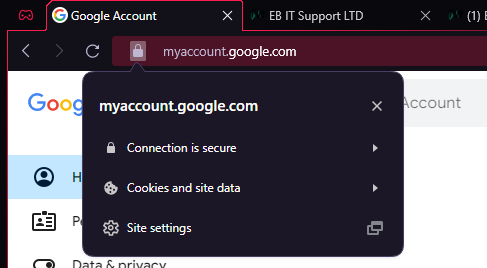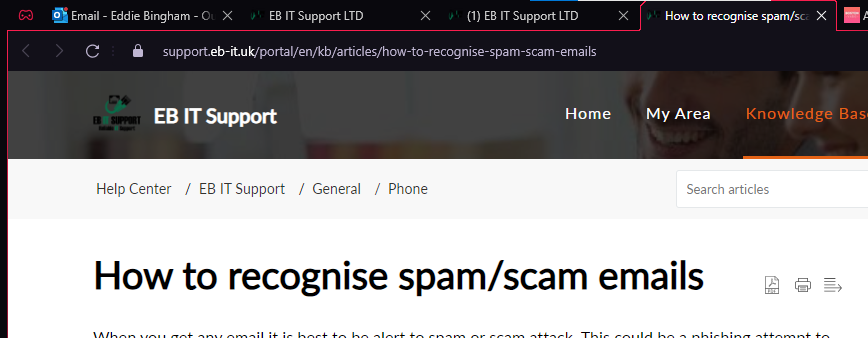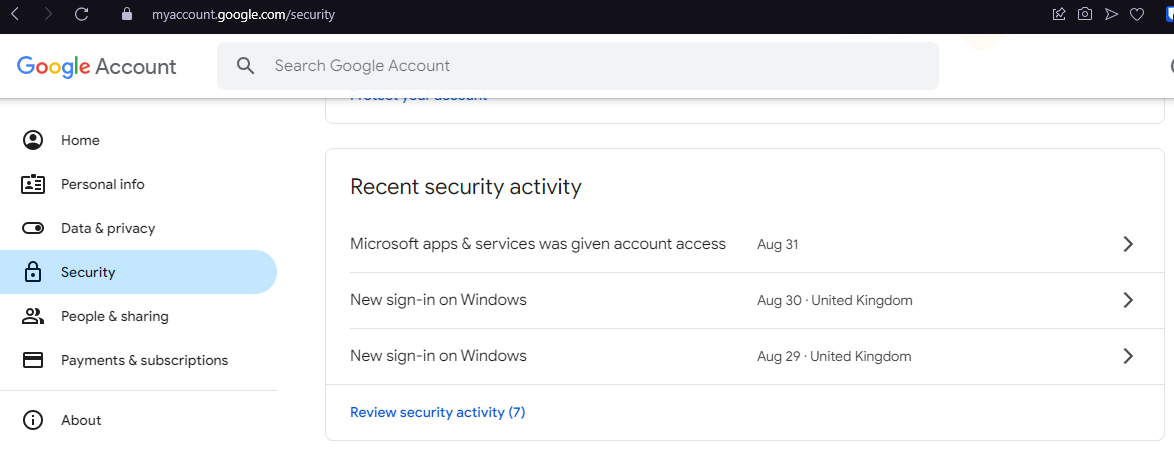How to recognise spam/scam emails
When you get any email it is best to be alert to spam or scam attack. This could be a phishing attempt to try and get your personal data, or to make you download a piece of software to your computer which will then infect your files.
Google, Microsoft, Facebook, Twitter/X. Instagram and all other social networks will never ask for your email address or password in an email. They will also not ask you to click on any button/link that takes you to fill in a form. They will sometimes however ask you to visit there own website such as "x.com" "facebook.com" "google.com" but this is very rare.
if you suspect that an email is a spam or scam the best thing to-do is either contact our support team on: 01205 627240 or forward the email to support@eb-it.uk and our technicians will take a look to identify it is. If you feel it is then most likely it is. You can mark the email as spam to block the email and have it sent to your "Junk"/"Spam" folder.
It is also advisable to check to see if the SSL certificate for the website is also valid, this can be checked by looking at the padlock icon that is next to the address in the address bar and making sure all items are valid. For example google uses the "myaccount.google.com" when looking at the account page for google.

I think I submitted a form, how can I check if my account is secure?
Other places you can check is
Google, Microsoft, Facebook, Twitter/X. Instagram and all other social networks will never ask for your email address or password in an email. They will also not ask you to click on any button/link that takes you to fill in a form. They will sometimes however ask you to visit there own website such as "x.com" "facebook.com" "google.com" but this is very rare.
if you suspect that an email is a spam or scam the best thing to-do is either contact our support team on: 01205 627240 or forward the email to support@eb-it.uk and our technicians will take a look to identify it is. If you feel it is then most likely it is. You can mark the email as spam to block the email and have it sent to your "Junk"/"Spam" folder.
I've clicked on a link to fill in a form. how can I tell if it is legitimate.
When you go to fill in any form on any website it is best to make sure that the form is belonging to the website you intended to send the data to you can do this by doing a quick address bar check, for example this address bar for this website is: https://support.eb-it.uk/portal/en/kb/articles/how-to-recognise-spam-scam-emails.

When you go to fill in any form on any website it is best to make sure that the form is belonging to the website you intended to send the data to you can do this by doing a quick address bar check, for example this address bar for this website is: https://support.eb-it.uk/portal/en/kb/articles/how-to-recognise-spam-scam-emails.
It is also advisable to check to see if the SSL certificate for the website is also valid, this can be checked by looking at the padlock icon that is next to the address in the address bar and making sure all items are valid. For example google uses the "myaccount.google.com" when looking at the account page for google.
I think I submitted a form, how can I check if my account is secure?
For google, head to "https://myaccount.google.com/security" - from the right hand side select security, then look for "Recent security activity" and click the "Review security activity" - this will show all the times you have logged in to Google and where this was from. If you do not recognise any of the activity follow the step at the bottom of this page for advice on what todo next.
Other places you can check is
- Microsoft: https://account.live.com/Activity - This site will ask you to login with your account, and verify with 2 factor authentication if enabled.
- X.com: https://x.com/settings/sessions
- Facebook: Profile > Settings & Privacy > Activity Log > Where you've logged in.
For each of the above links we suggest you go to the website and go to your profile/account settings rather than clicking on any links above.
I think I've been hacked/attacked help!
First thing to do is Don't Panic, and make sure any accounts that used the same email/username and password combination are changed. Then you need to try to login to the account you feel has been hacked and immediately change your password. If the website offers you to log out of all sessions this is advisable as it would require you to login on each device each time.
You then need to look into enabling 2 factor authentication, this will send your phone via SMS or via an App a 6 digit code, this changes every minute which makes it a lot harder for hackers to login to. DO NOT GIVE this code or the authentication key to anyone.
Password Manager
We would suggest you use a password manager to manage your passwords to make sure they are unique. Our recomendation would be "Bitwarden".
I think I've been hacked/attacked help!
First thing to do is Don't Panic, and make sure any accounts that used the same email/username and password combination are changed. Then you need to try to login to the account you feel has been hacked and immediately change your password. If the website offers you to log out of all sessions this is advisable as it would require you to login on each device each time.
You then need to look into enabling 2 factor authentication, this will send your phone via SMS or via an App a 6 digit code, this changes every minute which makes it a lot harder for hackers to login to. DO NOT GIVE this code or the authentication key to anyone.
Password Manager
We would suggest you use a password manager to manage your passwords to make sure they are unique. Our recomendation would be "Bitwarden".
Related Articles
Maning Email Accounts with EB IT Hosting
Email addresses can be added once you have at least one email-enabled domain with sufficient resources assigned. 1. Accessing Your Email Management Panel Log in to your hosting control panel: https://s2.ebithost.co.uk or https://panel.ebithost.co.uk ...Monitoring Traffic Usage with EB IT Support LTD
Keep track of your hosting account’s HTTP, email, and FTP traffic usage through your control panel. You can view detailed traffic statistics for specific periods or get an overview of your total usage. 1. Viewing Current Month Traffic To monitor your ...